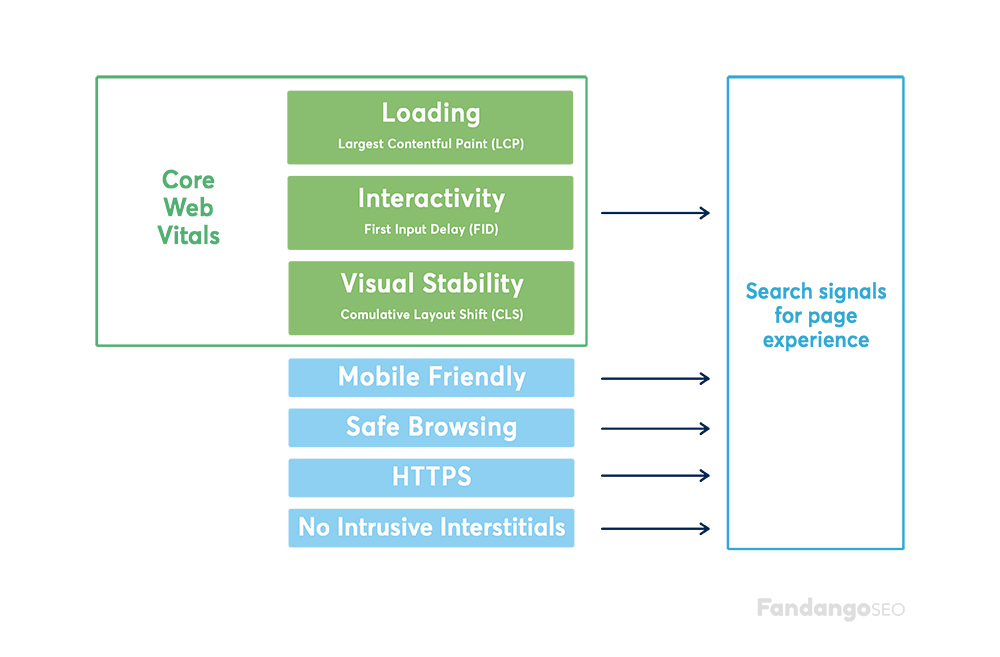Google has started to roll out the page experience update and will be completed by the end of August 2021.
Last May, Google announced Core Web Vitals, which are signals for page experience. A new set of metrics to measure speed and user experience on web pages. This updates Google’s algorithm, becoming a new way of classifying sites, according to the experience they provide. They have been implemented now, one year after they were announced.
The page experience update is now slowly rolling out (Top Stories will begin using this new signal by Thursday). It will be complete by the end of August 2021. More here: https://t.co/kDwhhOYklK
— Google Search Central (@googlesearchc) June 15, 2021
What is Page Experience?
Through Google’s Page Experience signals, Google measures what the user experience is like when using a website. By optimizing these aspects, the result is a more user-friendly page in all browsers, and it even contributes to making these sites better for mobile use.
It was only a matter of time before Google would update its algorithm in this direction. There is no doubt that online businesses will benefit significantly from this new feature since the goal is to make it easier for users to interact.
Core Web Vitals: What metrics will Google take into account?
The signals from the Core Web Vitals that will value the user experience on the page are the following:
- Largest Contentful Paint (LCP): It measures how long it takes to load the main content. Ideally, it should take less than 2.5 seconds.
- First Input Delay (FID): The time it takes for a page to become interactive. Optimally, it should take less than 100 milliseconds.
- Cumulative Layout Shift (CLS): It refers to the number of unexpected changes in the design of the visual part of the content. It should ideally be less than 0.1.

How Page Experience Update Affects SEO?
Google has made this clear. It wants to award the best positions to the sites that contain the best information, even if the experience on the page is not as good.
So then what’s new? The answer is in the sites that have content with similar relevance. In this case, page experience plays a key role in determining the ranking.
Following the principles outlined by Peter Morville (Semantic Studios), a page well optimized has to be:
- Useful: the user has to find utility in the information provided.
- Usable: both navigation and functionality must be clear.
- Desirable: the site has to contain elements that call the attention at a visual level (sound, animations, etc.), encouraging the visitor to interact with it.
- Reachable: the site must appear in SERPs.
- Accessible: the website must be available to all users, regardless of how they have accessed it.
- Valuable: the content must provide valuable information for the user.
- Reliable: the site must have authority on the subject it deals with, and provide elements that inspire confidence.
What practices contribute to the Page Experience

The main thing is to keep in mind the Core Web Vitals, but we can also follow a series of good practices that contribute to improving the user’s experience on the page:
Improve your Web hosting speed
Like Google itself, users also value an excellent page experience. And bad hosting can compromise security, stability, and especially page speed.
The best thing is to choose a plan consistent with the project’s demand and give priority to companies that inspire confidence and provide quality service.
Accelerate your CMS
It is also essential that your CMS is configured correctly so that your pages work correctly. If you use WordPress, you can do several things to improve the loading time and navigation:
- Disable any add-ons that you are not using. A CMS offers many solutions, but many webmasters accumulate unnecessary applications
- Compress your files and code. Include plug-ins to reduce the size of images and code on your site and lighten your pages.
- Create dynamic screens. In case your site has long pages or a large number of files, it would be best to use themes or lazy load plug-ins.
- Use high-performance themes. Choose fast interfaces with good usability. Always discard pirated WordPress themes.
Practice benchmarking
In the world of marketing, it’s well known how much you can learn by “spying” on your competitors, and in this case, it can also be beneficial. Tools such as FandangoSEO and SEMrush give you the possibility to compare your site’s SEO performance with that of others.
Companies often look for benchmarks in their market sector, which is not a bad practice. And big companies like Google, Amazon, and Facebook tend to do extensive testing to make their services as effective as possible.
Focus on your user
When it comes to optimizing a site, you have to think first about user satisfaction. Google’s parameters are useful, but you also have to consider your target audience’s characteristics.
It can happen that Google’s recommendations do not precisely coincide with the needs of your visitors, which is why you have to balance both aspects.
Once again, it is confirmed that the main focus of SEO is the user. When creating your page, you can’t think about your preferences, but how your visitor would like it to see. This is the fundamental key to SEO positioning.
Google Page Rank
